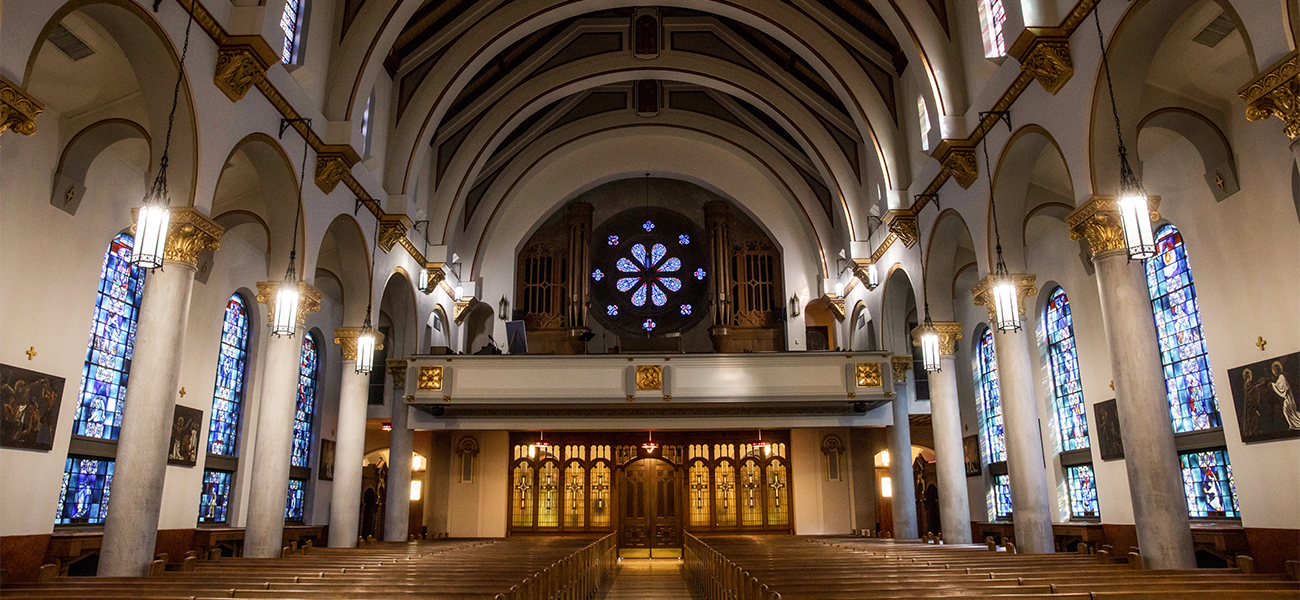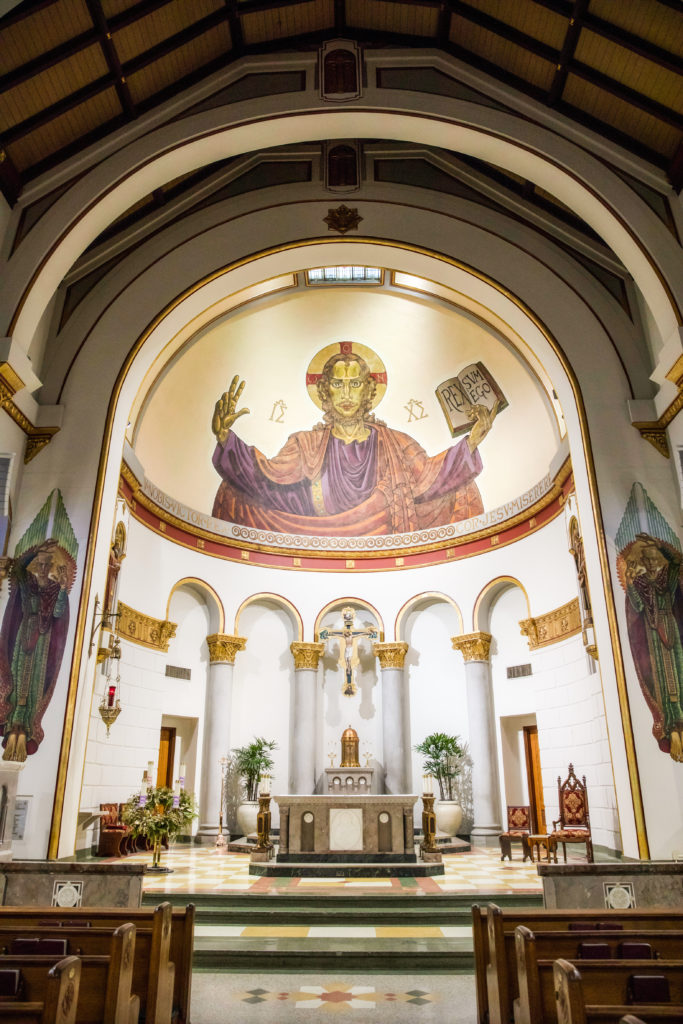
The powerful, imposing murals and ornate campanile of Sacred Heart make it a tall wonder in the Capital City
In 225’s ongoing series on the unique architecture and artifacts found in Baton Rouge’s places of worship, we take a look inside the Sacred Heart of Jesus Catholic Church on Main Street. The nearly 80-year-old church was founded initially for its Italian-American parishioners. The structure itself was a huge undertaking for the congregation—capped with a still-intact tiled steeple, and decorated inside with a variety of striking murals by an equally colorful visiting monk. sacredheartbr.org
Dutch painter and Benedictine monk Dom Gregory deWit came in during construction in the early 1940s to paint several murals, the largest of which looms over the sanctuary. Known as the Pantocrator, it’s a representation of Christ as the all-powerful ruler. The monk was inspired by Byzantine mosaics in Italy and Sicily. His figures bear Sicilian features, such as deep eyes and olive skin. The mural is the stuff of legend for parishioners, who remember being fearful as children of its gaze. “But I think more and more over the years, the parishioners and the people that approach it with an open mind come to feel like it’s the soul of this building—and kind of the soul of our parish,” says historian, artist and Sacred Heart parishioner Mary Lee Eggart.

Left: DeWit was “a bit larger than life,” according to Eggart. “You either loved him or you hated him … and people feel the same way about his paintings.” Over one of the confessionals in the nave is deWit’s mural, “The Samaritan Woman at the Well.” It’s based on a passage in the Gospel where Jesus meets her and discloses his knowledge of her marital sins. DeWit’s suggestive depiction of the Samaritan woman with her exposed thigh didn’t sit well with some parishioners. Eggart says controversy over the mural—plus the monk’s often temperamental nature—may have helped cut his time short at the church.
|
|
Right: A recognizable depiction of Mary holding Jesus after his crucifixion is flanked on either side by more modern figures. To the left, deWit painted a World War II soldier, and to the right, the soldier’s family. The bombing of Pearl Harbor happened as the church was being constructed, so the war was on parishioners’ minds as their sons and husbands went overseas. DeWit had arrived in the states in the ’30s to paint at an abbey in Indiana, but the war stranded him in America. He busied himself with other projects, including Sacred Heart.

More than 1,600 Italian tiles were carefully arranged on the cupola of the bell tower by a daring local artisan who accessed it by climbing a ladder more than 100 feet up. All the tiles are still firmly in place today.
Facing north, the Christ the King statue stands eight feet high and is carved from solid limestone. It was hoisted up to its niche using pulleys.
This article was originally published in the February 2018 issue of 225 Magazine.
|
|
|





